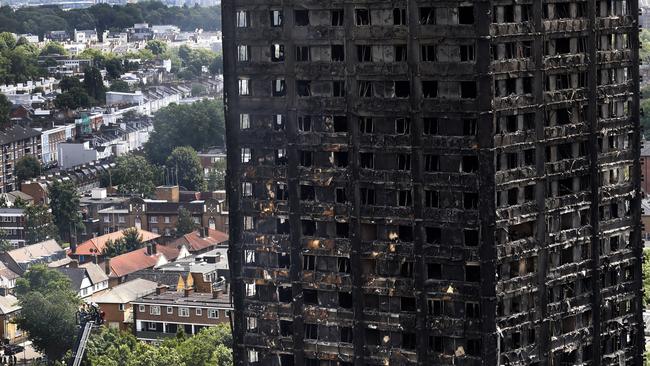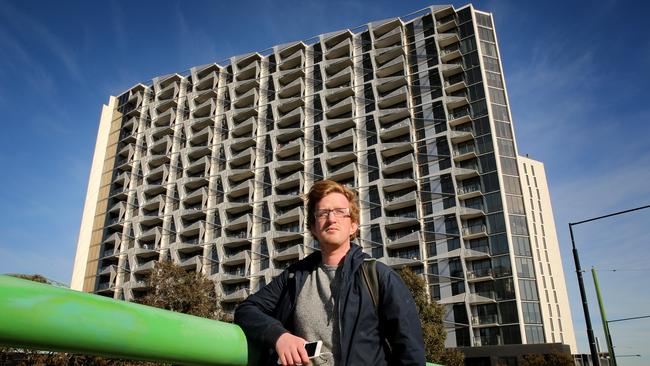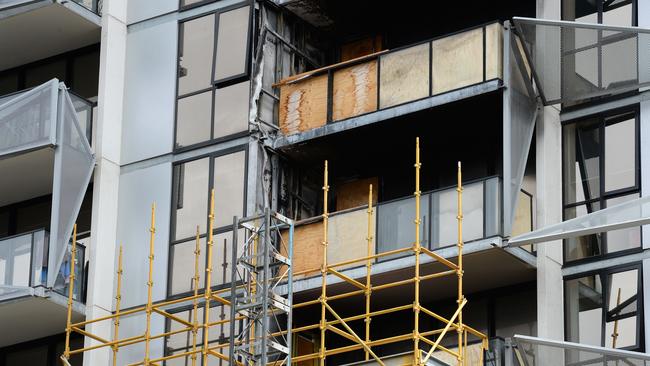Victorian buildings could have dangerous cladding
UP TO 1400 Victorian buildings, including 20 hospitals, could have fire-prone cladding similar to the material that fuelled a deadly fire in London, killing more than 70.
VIC News
Don't miss out on the headlines from VIC News. Followed categories will be added to My News.
UP TO 1400 Victorian buildings have potentially dangerous cladding similar to the type that fuelled a deadly fire in London that killed dozens.
And 20 hospitals have cladding that could be a safety risk.
A taskforce has identified eight hospitals with non-compliant cladding that must be replaced.
Urgent rectification works are already taking place at the Royal Women’s Hospital.
The hospitals that must have cladding removed are:
— Werribee Mercy Hospital
— The SN extension building at Casey Hospital
— The Sub Acute building at Casey Hospital
— Monash Medical Centre Block A at Clayton
— The Acute Services Building at Sunshine Hospital.
— Block F at Frankston Hospital
— The North Wing Expansion by Royal Melbourne Hospital.

The government says the cladding on those buildings will be replaced on seven of those hospital buildings within 18 months.
A further 12 hospital buildings have cladding that may be a safety risk and will remain under assessment.
Planning Minister Richard Wynne said all of the hospital buildings were safe to occupy.
Mr Wynne said the widespread use of the combustible cladding was a systemic failure of the industry as a whole.
But he admitted the building regulator “needed to do more and would do more.” The government will also ban the use of aluminium composite panels with a polyethlene core and expanded polystyrene cladding from buildings more than two levels high.

The Andrews Government Victorian Cladding Taskforce has found up to 1400 buildings most likely have the aluminium cladding with a polythene core or expanded polystyrene.
But they have refused to name those buildings.
That type of cladding was found at the Lacrosse Building in the Docklands, which ignited quickly in a 2014 fire and also the London Grenfell fire in June this year, which killed 71 people.
The taskforce co-chairs John Thwaites and Ted Baillieu said they found combustible cladding was widely used in Victorian buildings.
The government has ordered that all these 1400 buildings undergo a further audit by the Victorian Building Authority.
The audit will take six to 12 months. Six councils have already conducted their own checks on buildings which potentially had the cladding.

Mr Baillieu said provided further fire safety measures, like sprinklers, alarms or evacuation measures, the 1400 buildings were safe.
The Department of Health and Human Services has reviewed 1100 public buildings and vowed to take action where they find non-compliant cladding.
The Victorian government will appoint a state building inspector and require the Victorian Building Authority to inspect 10 per cent of buildings a year.
The VBA only inspects 2 per cent buildings a year.
Mr Thwaites said part of the culture of noncompliance in construction was builders did no fear enforcement.



